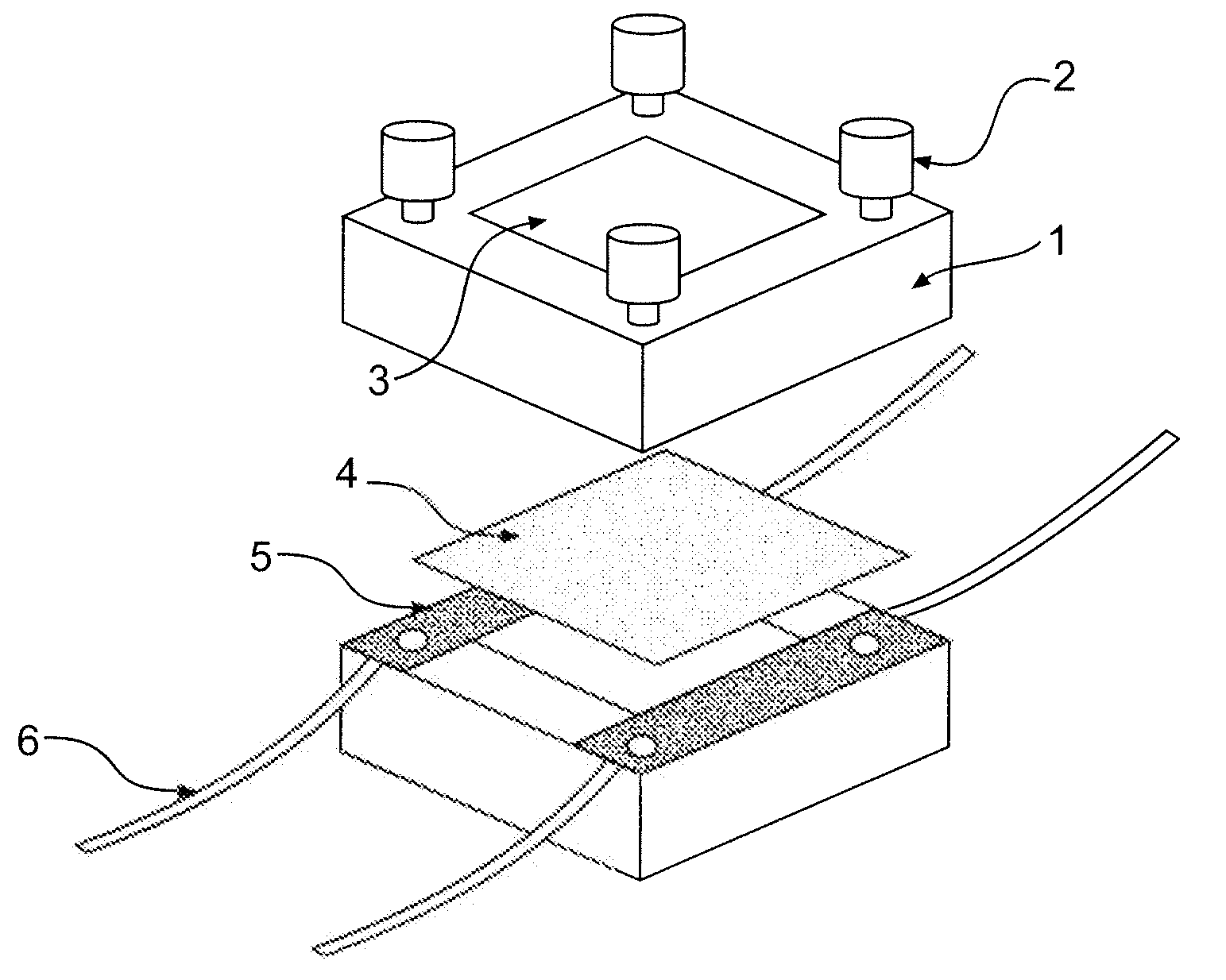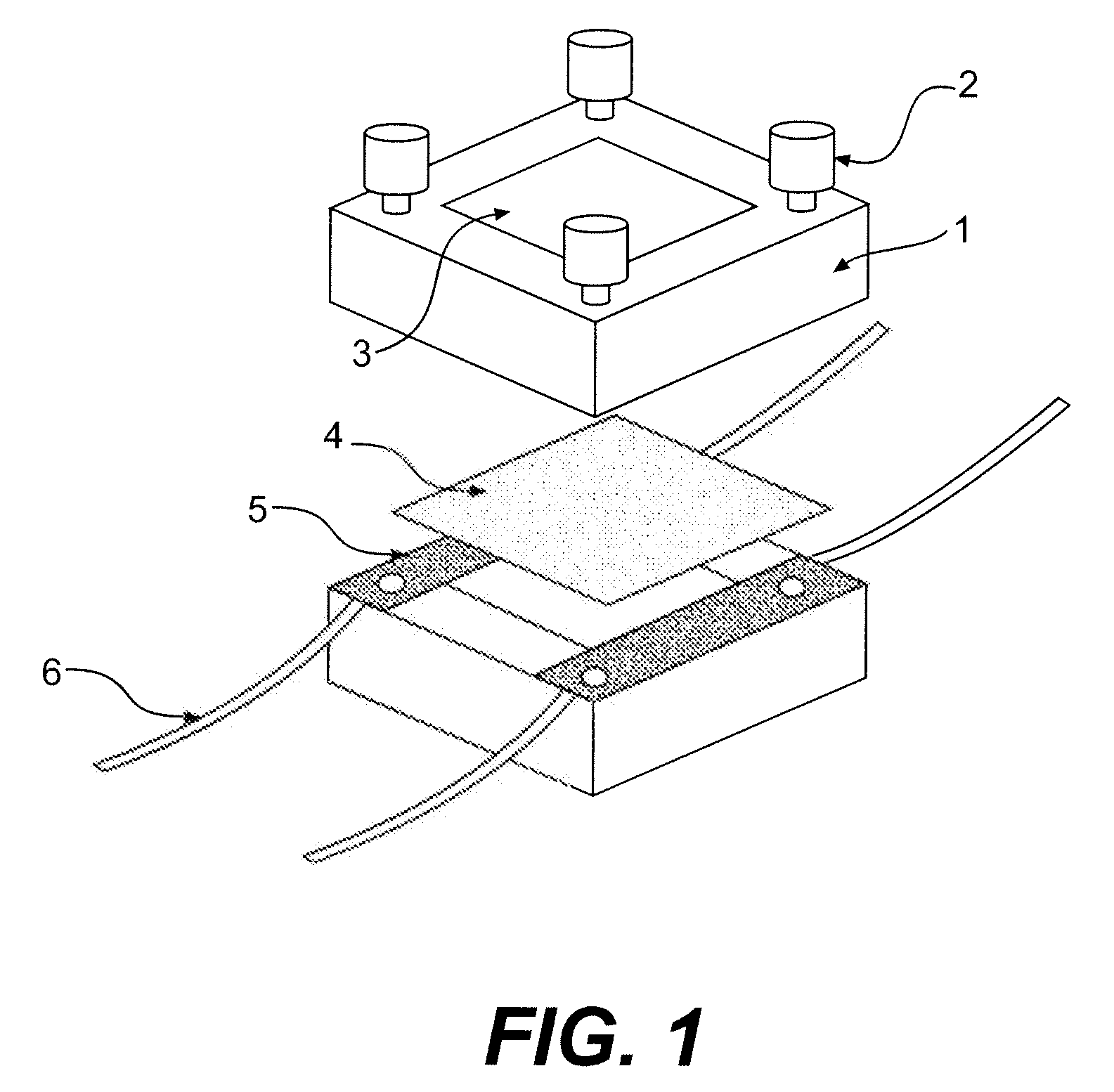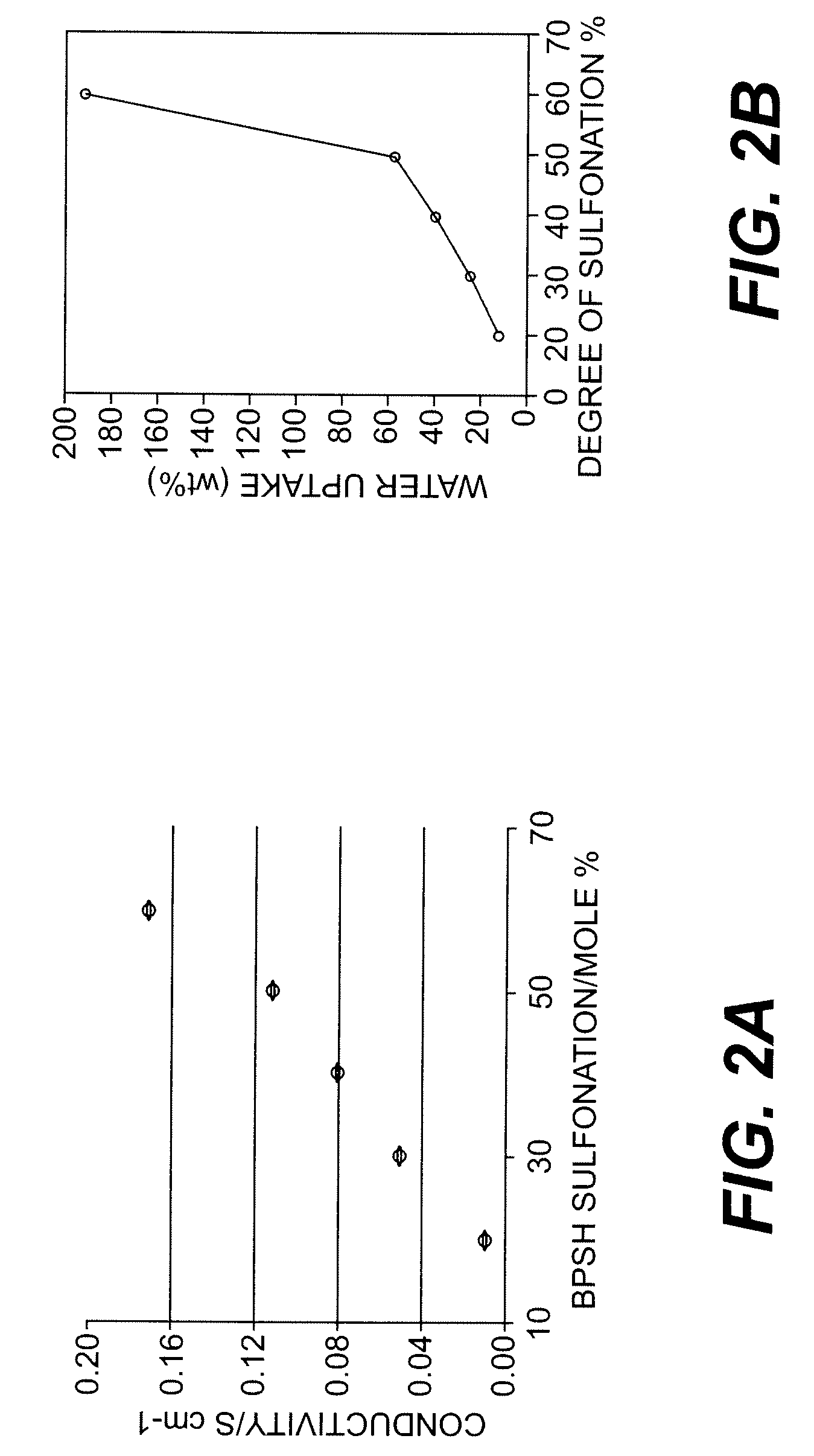Ion-conducting sulfonated polymeric materials
a technology of ion-conducting sulfonated polymer and polymer material, which is applied in the direction of ion-exchangers, membrane technology, chemistry apparatus and processes, etc., can solve the problems of reducing the conductivity at high temperatures, reducing the carbon monoxide poisoning of the electrocatalyst, and high cost, so as to improve the protonic conductivity and improve the thermal stability
- Summary
- Abstract
- Description
- Claims
- Application Information
AI Technical Summary
Benefits of technology
Problems solved by technology
Method used
Image
Examples
example 1
Sulfonated Polysulfone
[0061]The desired sulfonated monomer was prepared according to Scheme 4. 4,4′-dichlorodiphenylsulfone was reacted with fuming sulfuric acid, followed by neutralization with sodium chloride and sodium hydroxide. This electrophilic aromatic substitution process provides derivatives that are meta to the sulfonyl group and ortho to the chlorine group. The chemical structure was confirmed by proton and carbon NMR, as well as by mass spectroscopy, infrared spectra and elemental analysis. The anticipated structures were obtained in yields approaching 80%.
[0062]Sulfonated poly (arylene ether sulfones) were successfully synthesized via nucleophilic aromatic substitution polycondensation of biphenol, DCDPS and SDCDPS, at 0, 40, 60 and 100% of the SDCDPS relative to the total concentration of dihalide (DCDPS plus SDCDPS). The polymer synthesis (Scheme 1) involved condensing a controlled amount of the sulfonated activated halide (SDCDPS), the 4,4′-dichlorodiphenylsulfone a...
example 2
Sulfonated Polyimides
[0069]Sulfonated polyimides were made using DADPDS and BPDA in mol % of 0, 10, 25, 40, 60, 75, and 100. These sulfonated polyimides were then formed into membranes. Ionic conductivity and water uptake measurements were obtained and are reported in Table 3. Membranes containing 10% through 40% were conductive and had water uptakes ranging from 6.2 to 28.5% w / w. These materials were also examined for thermal stability. As shown in Table 4, the temperature at which the membranes exhibited a 5% weight loss in air ranged from 260 to 541° C. (Is this correct?)
TABLE 3Ionic Conductivity and Water Uptake For BPDA / s-DADPS.λas-Water(H2ODADPSIECUptakeamol. / Conductivityb ×Polymer(mol %)(meq / g)(% w / w)SO3)102 (S / cm)BPDA / s-DADPS- -0--0- cC—00BPDA / s-DADPS-100.341 6.212.120.410BPDA / s-DADPS-250.78415.913.520.725BPDA / s-DADPS-401.16128.516.361.540BPDA / s-DADPS-601.58337.715.87—60BPDA / s-DADPS-751.85255.516.59—75BPDA / s-DADPS-100 2.230W.SW.SW.S100
TABLE 4Thermal Stability For BPDA / s-DA...
example 3
Proton Exchange Membrane Nanocomposites
Polymer Synthesis and Composite Membrane Preparation
[0071]3.3′-disulfonated 4′4-dichlorodiphenylsulfone (SDCDS) was prepared by the reaction of 4,4′-dichlorodiphenylsulfone (DCDPS, BP Amoco) and fuming sulfuric acid, followed by neutralization with sodium chloride and sodium hydroxide. The chemical structure of this monomer was confirmed by 1H and 13C NMR, as well as by mass spectroscopy, infrared spectra and elemental analysis. Biphenol-based sulfonated poly(arylene ether sulfone)s were synthesized by direct polycondensation of 4,4′-biphenol (Eastman Chemical), DCDPS and SDCDPS, at 0, 20, 40, and 60 mole % of the SDCDPS. Copolymerizations proceeded quantitatively to high molecular weight in N-methyl-2-pyrrolidone at 190° C. in the presence of anhydrous potassium carbonate (Scheme 1). The copolymers in their salt form were then converted to the corresponding acid form by boiling in dilute sulfuric acid solution, followed by washing with deioniz...
PUM
| Property | Measurement | Unit |
|---|---|---|
| temperatures | aaaaa | aaaaa |
| temperatures | aaaaa | aaaaa |
| molar ratio | aaaaa | aaaaa |
Abstract
Description
Claims
Application Information
 Login to View More
Login to View More - R&D
- Intellectual Property
- Life Sciences
- Materials
- Tech Scout
- Unparalleled Data Quality
- Higher Quality Content
- 60% Fewer Hallucinations
Browse by: Latest US Patents, China's latest patents, Technical Efficacy Thesaurus, Application Domain, Technology Topic, Popular Technical Reports.
© 2025 PatSnap. All rights reserved.Legal|Privacy policy|Modern Slavery Act Transparency Statement|Sitemap|About US| Contact US: help@patsnap.com



